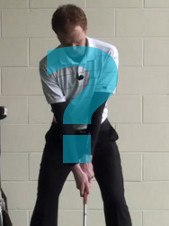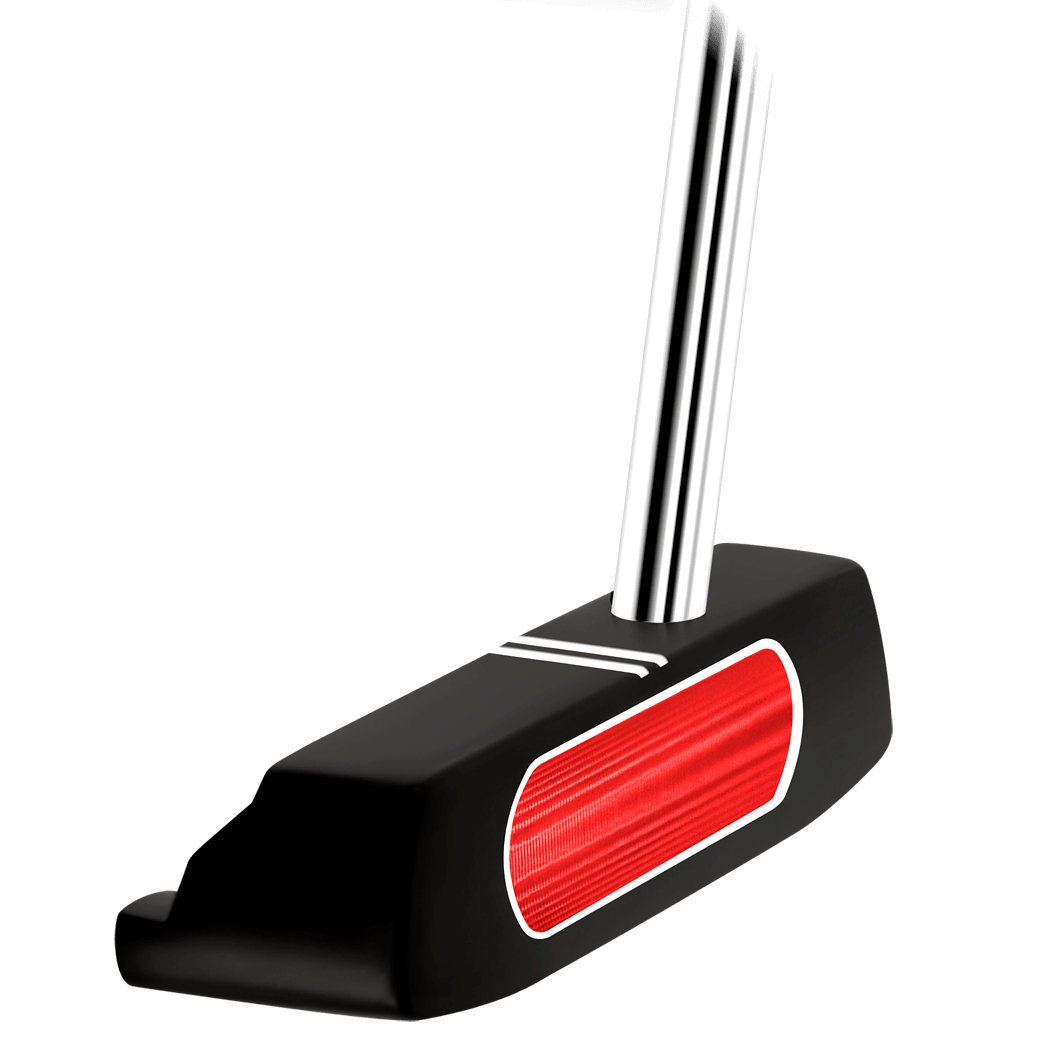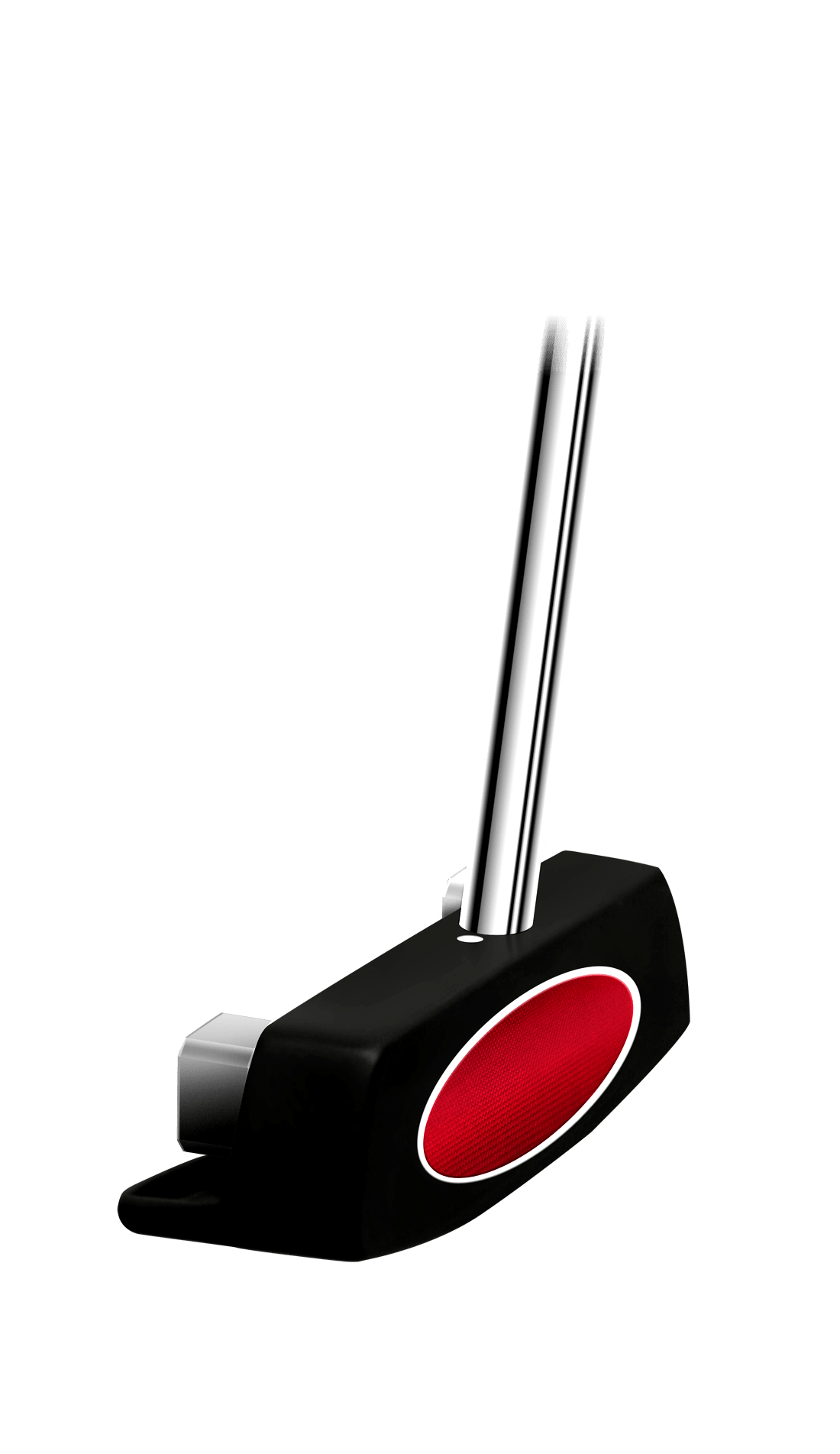
The familiar four words that are easily said after any bad shot on the golf course by your so called helpful friends and playing partners - 'Keep your head down!'
This is the most damaging advice which has the power to ruin a golfer's ability to play better golf. The reason this piece of advice gets passed about is because it is easy to say after any bad shot. 99.9% of the time this information is completely false and can interfere with the golfer's ability to have a free flowing golf swing to produce the best golf shots.
Fault - A bad shot is played, normally a topped shot, and your playing partners or friends state that you must have lifted your head, that is why you have topped the golf ball. A topped golf shot is where the leading edge of the golf club makes contact with the middle/top of the golf ball, and therefore the ball rolls along the floor with very little power and never gets airborne. This leads the golfer to force their head down when they next hit the golf ball and they do not continue to follow through, resulting in a poor shot.
Fix - Holding your posture, keeping your leading arm straight at impact, and making sure the weight distribution in your feet stays in the same place at impact is what needs to be worked on if you are topping the ball or missing the golf ball. Work on hitting golf shots whilst attempting to hold your posture at impact and work on maintaining your height at impact. Position yourself so that you can see your side profile in a mirror or reflection of glass and continue to set up to an empty tee peg. Whilst looking in the reflection, start to swing to the top of the golf swing and gently back down towards impact focusing on maintaining the posture and height originally found at set up.
The next thing to work on and practice is keeping the weight distribution in the feet towards the middle of your feet. This way when you come into impact, the body weight will not be tempted to move away from the golf ball towards the heels.
Key tip - Work on keeping the leading arm (left arm for right handed golfers) as straight at impact as it was at set up. Work on maintaining the length of the left arm throughout the golf swing and work on striking down and beyond the golf ball, and you will increase the chance of reaching the bottom of the golf ball at impact.
Practice this exercise and drill without the golf ball first to create the feeling of stretching the arm and strike beyond the impact area.

How Do I Keep My Head Down?
One of the first pieces of golf advice you will inevitably receive when getting started in the game is this – you need to keep your head down. There is likely not a golfer in the entire world who has not heard this piece of advice at one time or another. Usually, it is passed along by a well-meaning friend or playing partner. Or, you may have heard it during your first golf lesson, if you have taken one from a local pro at some point along the way.
As you might suspect, this piece of advice has become popular because it is important. If you hope to play good golf, you do need to keep your head down. With that said, it is possible to go too far with this tip, and we will get into that issue later in the article. Setting the details aside for you, you should know that keeping your head down is going to allow you to strike better shots, and do so more frequently. Golf is all about hitting the ball cleanly as often as you can – keeping your head down is going to serve both of those goals.
Knowing that it is important to keep your head down, you may wonder out to the driving range with the intention of working on this point. But how? How are you supposed to work on keeping your head down during the golf swing? This is more complicated than it might seem at first. Like everything in golf, the devil is in the details. You do need to keep your head down, but forcing it down toward your chest throughout the entire swing is not going to lead to positive results. Instead, you need to find a good balance where you can keep your head down but still maintain the freedom of movement necessary to make a quality swing.
In this article, we are going to go in-depth on the topic of keeping your head down. We will explain what it looks like to keep your head down properly, and what mistakes you need to avoid along the way. Also, we will highlight how you should be keeping your head down in the short game, as this is a different challenge than accomplishing the same feat during a full swing. In the end, we hope you have all the information you need to work on this crucial fundamental during your next practice session.
All of the content below is based on a right-handed golfer. If you happen to play left-handed, please take a moment to reverse the directions as necessary.

A Picture of Success
So, what is it going to look like when you make a golf swing where your head stays down nicely? We are going to answer that question in this section. As mentioned in the introduction, it's not as simple as just pushing your head down toward your chest while swinging the club around you. The best golf swings are those where the head stays in a comfortable, neutral position throughout the swinging action. Getting into such a position isn't the hardest thing you will have to do in golf, but it is not something to take for granted, either. Spend a bit of time working on this point and you will become a better player for the effort.
The following list highlights the points you should be monitoring while trying to place your head in the right spot.
- Chin up away from your chest. This is the first thing you need to understand about keeping your head down in the golf swing. While it is important to keep it down in terms of not look up prematurely during the swing, you don't want to push it down into your chest. If you force your chin down into your chest, thinking that you are doing a good job of keeping your head down, you will actually be interfering with your ability to make a full turn. With your chin down, your shoulders aren't going to be able to rotate properly going back, and your turn will be cut short as a result. Of course, a shorter turn can mean lost distance, altered rhythm, and a long list of other problems. As you set up over the ball at address, make sure you keep your chin up so your swing has the opportunity to live up to its potential.
- Eyes down on the ball. When thinking about head position during the swing, it is important to remember that it is really the eyes which need to stay down on the ball from start to finish. You need to see the ball if you are going to hit it cleanly, so keeping your eyes down should be a top objective. While your chin stays up, your eyes stay down to give you a clear view. Many golfers benefit from picking a specific spot on the ball which they can watch throughout the swing. At address, find one specific spot on the ball and keep it in your gaze until you have sent the shot on its way.
- Avoid tilting your head to either side. Many right-handed golfers wind up tilting their head to the right at address. This mistake could be made for a variety of reasons, but it is a mistake regardless of motivation. You want to positive your head vertically when starting the swing, without any sign of tilt either to the right or the left. Then, once the swing begins, you want to do your best to maintain that vertical position. Don't allow your head to tilt to the right during the downswing, as this is another common error. Minimizing movement is the name of the game when it comes to head position during the swing. Start with your head positioned straight up and down, and then keep it that way throughout the swinging action.
It is going to be difficult to build a quality golf swing without placing your head in the right spot. This is one of those building block fundamentals that you just can't afford to ignore. For an indication of the importance of this part of your swing, look no further than the PGA Tour. When you watch a tournament on TV, do you see players struggling to keep their head in position? Of course not. Rather, you see them completely in control, making swings which look controlled, simple, and reliable. This is the model for you to follow. If you can mimic the way professional players keep their head position quiet and controlled, you will be on the right path to a quality swing.

Mental Mistakes
Now that we have laid the groundwork for what you need to do to position your head properly, it is time to talk about some of the many mistakes you need to avoid along the way. In this section, we are going to deal with mental mistakes. In the next section, some physical mistakes will be highlighted. The reason we are focusing on mistakes is that there is nothing you need to do actively with your head once the swing begins. We can't give you tips for how to move it properly – because it shouldn't move. As long as you set up properly, and then avoid the mistakes outlined in this section and the next, you will be well on your way.
Let's take a look at some of the main mental mistakes that you need to avoid in order to keep your head down successfully.
- Wanting to see where the ball is going before it has been struck. Of course, this is the most common mental mistake you can make with regard to your head position. If you are anxious to see where the ball is going to go, you might look up before you have even hit it. This early move with your head will pull the rest of your upper body out of position, and it is very likely that you will miss-hit the shot. You have probably heard this advice over and over again, but it still bears repeating – watching the ball is not going to do anything to help it find the target. Once the ball has been struck, there is nothing that your eyes can do to help steer it on the right path. The best thing you can do is keep your eyes down on the hitting area until the club has ripped through the ball and sent it off into the distance. Then, and only then, can you feel free to look up and see where the shot is headed. It will take discipline to break yourself of the habit of looking up early, but getting away from this mistake is essential for success.
- Looking up early on challenging shots. This is a very similar problem to the one listed above, yet it is more specific – and potentially more damaging. In this case, we are talking about making the mistake of looking up early only when facing a challenging or intimidating shot. This golfer is able to keep his or her eyes down on the ball nicely on 'normal' shots, only to look up early when dealing with a challenge like playing an approach shot over water. It should go without saying that your goal is to approach each and every shot you face with the same discipline regarding your head position. Your head should stay still, your eyes should stay down, and you should trust that your swing is going to get the job done. After all, looking up early on these kinds of shots is only going to give you a better view of your ball dropping into the pond – is that something you really want to see?
- Losing trust in your preparation. The point of preparing for your golf shots is to set yourself up in a position to be successful. That means you are going to work on getting aligned properly with the target based on the shot you have planned. If you go through a consistent pre-shot routine before hitting each shot, you should be well-prepared to achieve positive results. Of course, you can still undermine those results by losing trust in your preparation at some point during the swing. It is relatively common for amateur golfers to 'panic' during the swing, losing trust in what they have planned and looking up early to see where the shot is going to go. It must be remembered that once the swing begins, there is nothing you can do to correct mistakes that may have been made during the preparation phase. Since you can't correct those errors, you may as well put them out of your mind. Believe in yourself at all times while on the course, and don't allow doubt to get in the way of your performance.
It would be a shame to set yourself up for success only to get in the way of that success by making a mental mistake. The best way to avoid mental mistakes on the course is to work hard on the practice range. By teaching yourself the right fundamentals on the range – and teaching yourself to trust those fundamentals – you will stand a much better chance to keep your mind in the right place throughout each swing.







